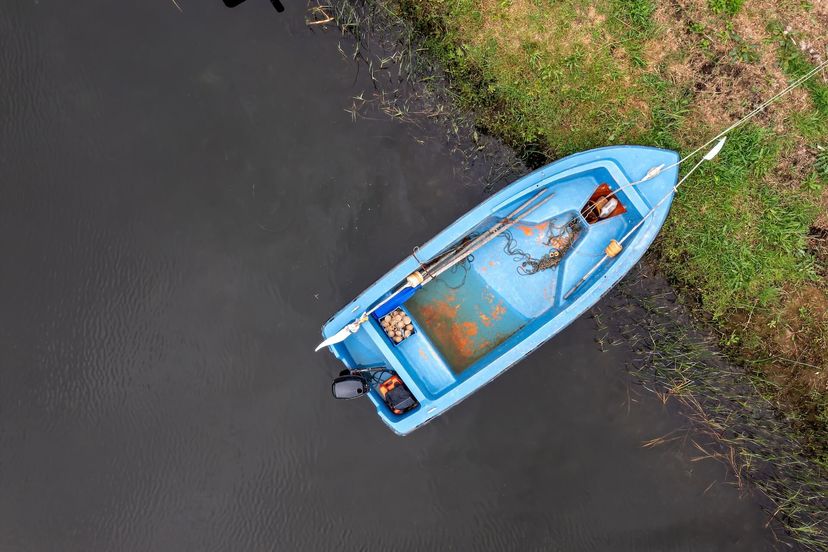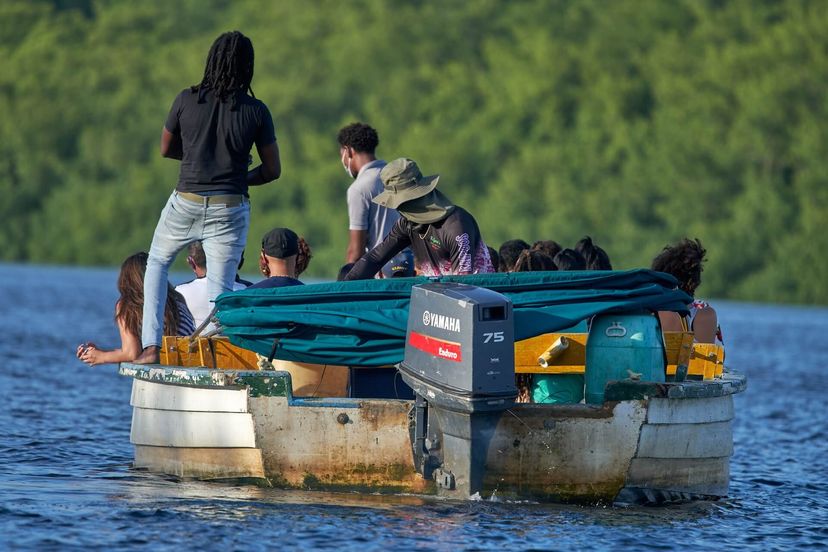ASA 116 Dinghy and Outboard Endorsement
Want to become skilled at operating a dinghy? Our complete ASA 116 certification training will help you become a confident dinghy operator. This certification gives you more freedom to move between your cruising yacht and the shore. You'll gain independence on the water and make your sailing experience better.
Our instructors will teach you everything about dinghy outboard operations, from simple operating procedures toadvanced techniques. The course includes boarding methods, beach landings, safety gear needs, and proper securing techniques. You'll practiceessential knots such as the clove hitch and bowline. The training covers throttle control, gear changes, towing, anchoring, and solutions to common problems.
Understanding Dinghy Types and Components
Naos Yachts believes that knowledge of different dinghies types and their components plays a significant role in becoming skilled at ASA 116 certification. Students will encounter three main categories of dinghies:
- Hard Shell Dinghy: Excellent for rowing and durability
- Soft Inflatable Dinghy: Known for lightweight portability
- Rigid Inflatable Dinghy (RIBs): Combining stability with performance
A dinghy with outboard's core components define its functionality. The hull delivers buoyancy and supports all other parts, and the transom acts as the outboard motor's mounting point. The bow ring and towing eye serve as vital components that secure and tow the vessel.
The outboard motor features three main sections: the powerhead (top), mid-section, and lower unit. Engine components reside in the powerhead, which connects through the mid-section to the lower unit containing the propulsion system. The motor's control system includes the throttle that manages speed, the gear shift that controls direction, and the kill cord that ensures safety.
Students pursuing ASA 116 certification should understand the inflation valves and drain plugs on inflatable models. These parts ensure proper maintenance and safety. The thwart seats and oarlocks add stability and enable manual propulsion whenever needed.

Essential Safety Procedures and Equipment
Safety stands paramount in our ASA 116 certification program. We emphasize proper safety equipment and procedures during dinghy operations. Naos Yachts ensures all students understand and comply with U.S. Coast Guard requirements and security measures. Every dinghy must carry these essential safety items:
- Coast Guard-approved PFD for each person
- Sound-producing device (whistle or horn)
- White all-around light for night operation
- Fire extinguisher (for boats with permanent fuel connections)
- Visual distress signals for night operations
The kill cord needs special attention as it stops the engine if the operator falls from the helm. This simple yet vital safety device works best when worn around your leg instead of your wrist to avoid entanglement with steering mechanisms.
Safe loading is a significant aspect we teach in our ASA 116 course. Your dinghy's capacity plate shows the maximum number of people and total weight it can safely carry, including any provisions. The load should stay centered and evenly distributed to maintain stability.
Night operations require proper lighting. Your dinghy needs an all-around white light that others can see from all directions between sunset and sunrise. Vessels with speeds above 7 knots must also display red and green navigation lights.
Note that these safety procedures protect you and your passengers during each experience from vessel to shore. They're more than just requirements - they're proven practices that keep everyone safe.

Mastering Dinghy Operation Techniques
Learning to safely operate a dinghy takes skill, practice, and a good grasp of environmental conditions. Our team at Naos Yachts teaches students that successful dinghy maneuvering begins with a solid grasp of wind and current patterns. These steps help you approach and land safely:
- Position the dinghy upwind or up-current
- Control speed by adjusting throttle and trim
- Maintain a steady approach angle
- Use short bursts of power for precise control
- Keep the bow slightly up in choppy conditions
Our training emphasizes proper technique based on wind conditions. You should approach at a controlled speed and turn into the wind to stop during onshore winds. More power helps counter the wind's effect in offshore conditions. Beach landings need attention to several factors:
- The beach's gradient and surface
- Swimmers and other water users in the area
- Outboard position in shallow water
- Speed control with intermittent power
Students learn throttle control and gear shifting through practical exercises. Smooth, careful movements work best - quick enough to stay in control yet gentle enough to avoid jerky operation. A "no wake" speed near other vessels protects them from your boat's wash.
The art of dinghy operation goes beyond power management. Reading water patterns and knowing your vessel's response to conditions makes all the difference. Our ASA 116 certification program helps you build these core skills with hands-on practice in different conditions, including launching, hoisting, and docking to develop your overall seamanship.

Maintenance and Troubleshooting
Reliable dinghy operation depends on proper care and maintenance as its life-blood, and our ASA 116 certification program at Naos Yachts strongly emphasizes this crucial aspect. Your preventative care routine will help you avoid systemic problems that could leave you stranded between shore and vessel.
Fuel System Care plays a vital role in optimal performance. Fresh fuel with a quality stabilizer like Sta-Bil 360 Marine should be used during storage periods. Your fuel integrity depends on these key practices:
- Buy fuel from high-volume stations
- Store fuel in proper color-coded containers
- Maintain proper tank ventilation
- Look for water contamination regularly
A systematic approach guides our engine troubleshooting process. Your engine might not start or run roughly due to these common issues:
- Fuel vent obstruction
- Clogged fuel filters
- Fouled spark plugs
- Water in the fuel system
Seasonal storage requires protecting your outboard motor with fogging oil and proper winterization procedures. This protection should include lubricated external bolts, fresh lower unit oil, and correct positioning during storage periods. Proper shutdown procedures are also critical.
Our preventative maintenance program focuses on regular propeller damage inspection, battery connection checks, and proper corrosion protection. A well-maintained dinghy requires more than just cleanliness - all systems must function optimally to ensure safe, reliable operation.
Become a Confident Dinghy Operator with Naos Yachts in Marina del Rey
ASA 116 certification helps you become skilled at dinghy operation by combining technical knowledge with practical skills development. Sailors just need to understand different vessel types, components, and proper maintenance protocols to operate safely.
These basics, along with advanced techniques and safety procedures, help create capable dinghy operators who can handle different maritime conditions. Our complete training program will give a sailor the confidence and skills needed for reliable vessel-to-shore transportation.
Naos Yachts believe that knowledge combined with hands-on experience builds confident and capable sailors. Our premier sailboat dealership and brokerage in Marina del Rey offers high-quality sailboats that match your needs. Our commitment to safety, skill development, and thorough training helps ASA 116 certification holders become responsible, skilled operators ready for their next maritime adventure.
FAQs
Do I need any prerequisites to take ASA 116?
Yes, most schools require ASA 101, 103, and 104 certifications or equivalent experience, as well as a certain amount of logged sailing hours. This ensures that students have a solid foundation in sailing before moving to advanced topics.
How long does the ASA 116 course usually take?
The course length can vary, but it typically lasts two to three days, including on-water training and possibly an overnight sail. This time frame allows students to experience nighttime navigation and advanced scenarios.
Will I be certified to sail independently after ASA 116?
ASA 116 certifies you to skipper a boat for coastal passages in both day and night conditions, giving you the skills to manage a vessel safely in more challenging environments. However, further experience may be necessary before taking on independent journeys.
Can an electric outboard or propane outboard be attached to a sailing dinghy?
Yes, an online outboard motor can be attached to a sailing dinghy, but it should be kept on the transom at all times. Storing it inside the dinghy isn't practical. Additionally, when the mainsail is sheeted to the transom, there's a risk of the sail's sheet entangling with the motor, especially during maneuvers like a gybe.




